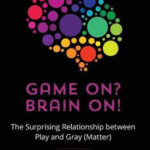The last 20 years have brought about powerful new ways to think about teaching and learning.
When teachers combine our experience, professional traditions, and instincts with the scientific insights of psychology and neuroscience research, we find new ways to understand our classroom work.
As I’ve written before, we currently suffer from an embarrassment of riches.
With SO MANY ideas that have strong and consistent research backing, how can we understand and prioritize all the suggestions coming our way? (One recent answer: Chew and Cerbin’s approach, focusing on the cognitive challenges students face.)
The Big 6
You’d like another way to think about all this research?
Over at The Learning Scientists, several wise scholars have been championing a blend of six research-based approaches to teaching: spacing, interleaving, retrieval practice, elaboration, concrete examples, and dual coding.
Frequent readers will recognize almost every strategy on that list. I write about at least one of those each month. (If you want more information on “retrieval practice,” for instance, click on the tag in the right column.)
Two of the Learning Scientists, Dr. Yana Weinstein and Dr. Megan Sumeracki, have written a great book: Understanding How We Learn, a Visual Guide. If you want to explore those big 6 in depth, you should put it on your “must read” pile right away.
If, however, you’d like a brisker introduction to these ideas, I’ve recently found a review article by Weinstein and Sumeracki (and Christopher Madan) that summarizes and illustrates all six.
Newcomers to this field you can read its fifteen pages in an hour.
Veterans can instead scan it for a refresher, and for new insights and combinations.
For Example
Although I’ve written frequently about most of the Big Six, I don’t often discuss elaboration. More than the other concepts, it resists easy definition.
Luckily — more than most psychology terms (I’m looking at you, “theory of mind”) — the term means what it says. When we ask students to elaborate on new information or new skills, this deeper processing helps consolidate long-term memories.
For instance, in preparation for teaching Their Eyes Were Watching God, I took some time in Thursday’s class to define the terms “voice” and “agency” as English scholars use them. These concepts will be essential to understand Janie’s development over the course of the novel.
We then elaborated on those definitions by discussing two plays we had just finished reading: Fences and Macbeth.
When does Lady Macbeth have “voice”?
How does Troy claim “agency”?
What strategies does Roes use to claim voice and agency in her life?
How does the set of Fences represent limitations on agency?
And so forth.
By connecting these two new words to events they already knew and understood, students elaborated on their definitions. (And — as a bonus — got some retrieval practice about Fences and Macbeth.)
By the way, the Enser’s handy book Generative Learning in Action offers LOTS of well-researched elaboration strategies.
In Sum
At Learning and the Brain, we bring teachers and researchers together for productive conversation.
Sometimes, we should focus on research details to ensure they’re persuasive enough for us to reshape our teaching practices.
At other times, we should refocus on the big picture — to understand how each of the techniques adds up to a coherent teaching practice.
Weinstein, Madan, and Sumeracki help us do just that.
Enjoy!




